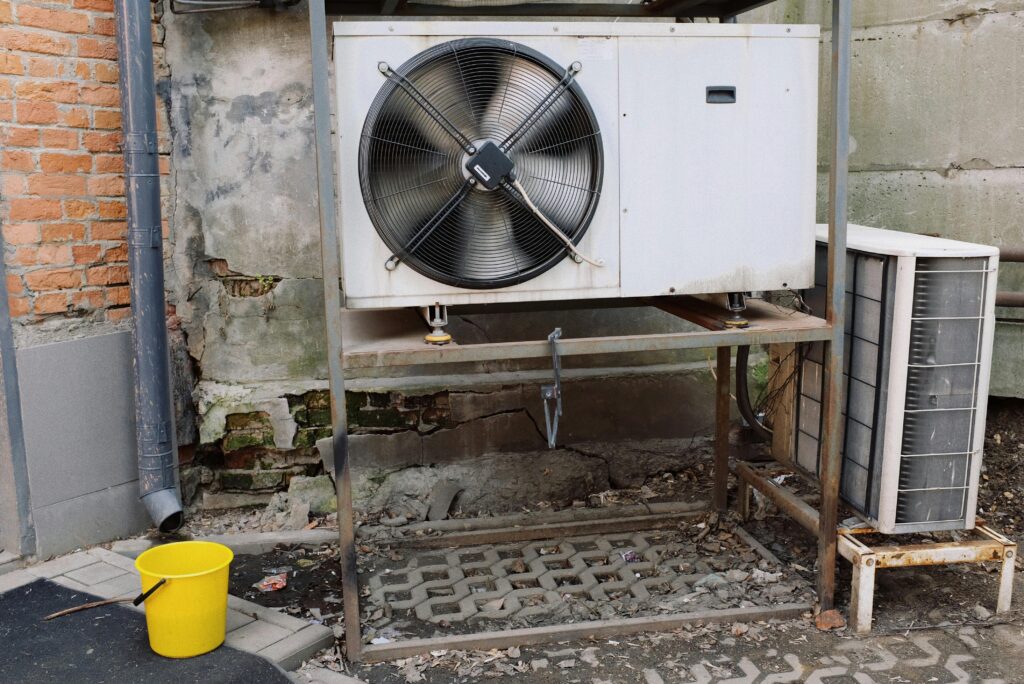Air conditioners are essential for maintaining comfort in our homes, especially during the hot summer months. Among the various models available, the YEX382V3YTE air conditioner is known for its efficiency and reliability. However, like all appliances, it can sometimes experience issues that require repair. This comprehensive guide will walk you through the steps needed to repair YEX382V3YTE air conditioner effectively.
Understanding Common Issues with the Repair YEX382V3YTE Air Conditioner
Before diving into the repair process, it’s important to understand some common problems that can affect the YEX382V3YTE air conditioner:
- Poor Cooling Performance: This is often due to dirty filters, low refrigerant levels, or a malfunctioning compressor.
- Strange Noises: Unusual sounds can indicate issues with the fan motor, loose parts, or debris in the unit.
- Water Leaks: Leaks usually result from blocked drainage pipes or an overfilled drip pan.
- Electrical Problems: These can include issues with the thermostat, circuit board, or wiring.
- Ice Build-Up: Often caused by low refrigerant, poor airflow, or a dirty evaporator coil.
Tools and Materials Needed
To repair your Repair YEX382V3YTE Air Conditioner, you will need the following tools and materials:
- Screwdrivers (Phillips and flathead)
- Multimeter
- Replacement parts (if necessary)
- Cleaning supplies (vacuum, soft brush, mild detergent)
- Refrigerant (if required)
- Insulation tape
- User manual for the YEX382V3YTE model
Step-by-Step Repair Guide
1. Safety First
Before starting any repair, ensure the air conditioner is turned off and unplugged to avoid any electrical hazards. If you’re working with refrigerant, wear protective gloves and goggles.
2. Diagnose the Problem
To effectively repair the Repair YEX382V3YTE Air Conditioner, accurately diagnose the issue:
- Check the Air Filter: A clogged filter can restrict airflow, leading to poor cooling. Remove and clean the filter or replace it if it’s damaged.
- Inspect the Thermostat: Ensure the thermostat is set to the correct temperature and functioning properly. Use a multimeter to check for electrical continuity.
- Examine the Circuit Board: Look for any burnt or damaged components on the circuit board, which could indicate electrical issues.
3. Cleaning and Maintenance
Regular cleaning and maintenance can prevent many common issues:
- Clean the Coils: Dirty coils can reduce efficiency. Use a soft brush or vacuum to remove dust and debris from the evaporator and condenser coils.
- Clear the Drainage System: Ensure the drainage pipe and drip pan are clear of blockages. Clean them with mild detergent and water.
- Lubricate Moving Parts: Lubricate the fan motor and other moving parts to reduce noise and ensure smooth operation.
4. Refrigerant Issues
Low refrigerant levels can cause poor cooling performance and ice build-up:
- Check for Leaks: Inspect the refrigerant lines for any signs of leaks. If you find a leak, it’s best to call a professional to handle the refrigerant replacement.
- Recharge the Refrigerant: If the refrigerant is low but there are no leaks, you can recharge it yourself. Follow the instructions in the user manual for the correct type and amount of refrigerant.
5. Repairing Electrical Problems
Electrical issues can be more complex and may require professional assistance:
- Test the Capacitor: Use a multimeter to check the capacitor for proper functionality. Replace it if it’s faulty.
- Inspect the Wiring: Look for any loose or damaged wires and repair or replace them as needed. Ensure all connections are secure.
- Replace the Circuit Board: If the circuit board is damaged beyond repair, you may need to replace it. Follow the manufacturer’s instructions for installing a new board.
6. Addressing Ice Build-Up
If you notice ice build-up on your Repair YEX382V3YTE Air Conditioner, take these steps:
- Defrost the Unit: Turn off the air conditioner and let the ice melt. This can take several hours.
- Check Airflow: Ensure nothing is obstructing the airflow around the unit. Clean the filter and coils to improve airflow.
- Monitor Refrigerant Levels: Low refrigerant can cause ice build-up. Check the levels and recharge if necessary.
When to Call a Professional
While many repairs can be done at home, some issues require professional expertise:
- Major Refrigerant Leaks: Handling refrigerant requires special equipment and certification.
- Compressor Problems: The compressor is a critical component, and repairing or replacing it can be complex.
- Persistent Electrical Issues: If you can’t resolve electrical problems, it’s best to call a licensed electrician.
Preventive Maintenance Tips
Regular maintenance can extend the life of your Repair YEX382V3YTE Air Conditioner and prevent future issues:
- Change Filters Regularly: Replace or clean the air filter every 1-3 months, depending on usage.
- Schedule Annual Inspections: Have a professional inspect your air conditioner annually to catch any potential problems early.
- Keep the Unit Clean: Regularly clean the coils, drainage system, and exterior of the unit to maintain efficiency.
Conclusion
Repair YEX382V3YTE Air Conditioner can be straightforward if you follow the steps outlined in this guide. By diagnosing the problem, performing regular maintenance, and knowing when to call a professional, you can keep your air conditioner running smoothly and efficiently. Remember, safety should always be your top priority when working with electrical appliances.
FAQs
1. How do I fix my air conditioner not working?
If your air conditioner isn’t working, here are some steps to troubleshoot:
- Check the thermostat: Ensure it’s set to “cool” and the temperature is lower than the room temperature.
- Inspect the circuit breaker: The AC unit might have tripped the breaker. If so, reset it.
- Check the air filter: A clogged filter can restrict airflow, causing the system to shut down or not cool properly. Replace or clean it if necessary.
- Examine the outdoor unit: Ensure the condenser unit outside is free of debris and that the fan is running.
- Inspect the drain line: If the drain line is clogged, it could cause the system to shut down.
- If these steps don’t work, it might be time to call a professional HVAC technician.
2. Can you repair the compressor in an air conditioner?
Yes, the compressor in an air conditioner can be repaired, but it depends on the issue. Common problems include:
- Electrical issues: Sometimes, the wiring or electrical components can be fixed or replaced.
- Refrigerant problems: If the compressor is low on refrigerant due to a leak, the leak can be repaired and the system recharged.
- Mechanical failures: If internal parts of the compressor are damaged, it might be more cost-effective to replace the compressor or the entire unit. Repairing a compressor can be complex and costly, so in some cases, replacing the unit might be more economical.
3. How do I write a letter to repair my air conditioner?
When writing a letter to request air conditioner repair, keep it clear and concise:
- Start with a formal greeting: “Dear [Landlord/Property Manager/Company Name],”
- State the issue: “I am writing to request a repair for the air conditioner in my [apartment/home/office]. The unit is currently not functioning properly.”
- Describe the problem: “The AC has stopped cooling, and I have checked the thermostat, circuit breaker, and air filter, but the issue persists.”
- Request action: “Could you please arrange for a technician to inspect and repair the air conditioner as soon as possible?”
- End with a polite closing: “Thank you for your attention to this matter. Sincerely, [Your Name].”
4. Can you repair an air conditioner condenser?
Yes, an air conditioner condenser can often be repaired, depending on the problem:
- Leaks: If the condenser coil has a leak, it might be repairable, but severe leaks could require a replacement.
- Fan issues: The fan in the condenser unit can often be repaired or replaced if it’s not working.
- Electrical problems: Wiring and capacitors can be replaced if they are causing the condenser to malfunction. It’s best to have a professional diagnose the issue to determine if a repair is possible or if a replacement is needed.
5. Why is AC running but not cooling?
If your AC is running but not cooling, here are possible causes:
- Low refrigerant: The system might be low on refrigerant due to a leak.
- Dirty coils: Dirty evaporator or condenser coils can reduce cooling efficiency.
- Clogged air filter: A clogged filter can restrict airflow, making the AC less effective.
- Thermostat issues: The thermostat might be faulty or set incorrectly.
- Frozen evaporator coil: This can happen due to low refrigerant or poor airflow.
- Condenser unit problems: The outdoor condenser might be dirty or obstructed. Addressing these issues typically involves cleaning, checking refrigerant levels, or repairing components.
6. How to repair an AC?
Repairing an AC involves identifying the problem and addressing it:
- Check the thermostat: Make sure it’s working and set correctly.
- Inspect and replace filters: Replace dirty or clogged air filters.
- Examine the coils: Clean dirty evaporator and condenser coils.
- Check the refrigerant levels: If low, have a professional recharge it and check for leaks.
- Inspect the drain line: Clear any clogs in the condensate drain.
- Test the fan motor and blower: Ensure they are running smoothly. For complex issues, it’s best to hire a professional HVAC technician.
7. How to check AC coil?
To check your AC coil:
- Turn off the power: Shut off power to the AC unit at the breaker.
- Access the coils: Remove the access panel on the indoor unit to inspect the evaporator coil, or check the outdoor condenser coil.
- Inspect for dirt and debris: Look for visible dirt, dust, or ice buildup.
- Clean the coils: If dirty, clean the coils using a soft brush, compressed air, or a commercial coil cleaner.
- Check for leaks: Look for signs of refrigerant leaks, such as oily spots or hissing sounds.
8. What to check when AC stops cooling?
If your AC stops cooling:
- Circuit breaker: Check if the breaker has tripped.
- Air filter: Replace or clean a dirty filter.
- Outdoor unit: Make sure the condenser is clean and free of obstructions.
- Refrigerant levels: Low refrigerant might be the issue, requiring a professional to recharge the system.
- Blower fan: Ensure the fan inside the unit is working properly. If none of these resolve the issue, professional help may be necessary.
9. Why is my AC motor working but not cooling?
If the motor is working but the AC isn’t cooling:
- Refrigerant issues: The system might be low on refrigerant due to a leak.
- Dirty coils: The evaporator or condenser coils might be dirty, reducing efficiency.
- Blocked or dirty air filter: This can restrict airflow, preventing the AC from cooling effectively.
- Thermostat malfunction: The thermostat might not be signaling the cooling cycle correctly.
- Compressor problems: The compressor might be faulty or not engaging, which is critical for cooling. Check these components and address the issues accordingly, or contact a professional for further diagnosis.


